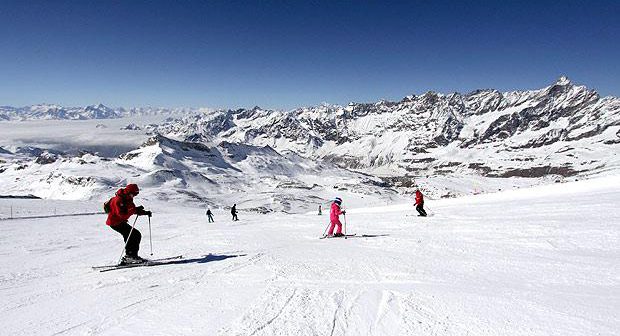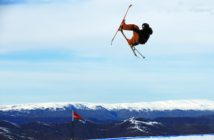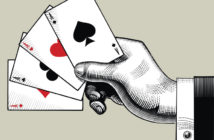
Italy’s high-altitude ski resorts promise a combination of great conditions, excellent value and a stylish atmosphere. Peter Hardy selects 10 of his favourites
If low prices, good food, and a fabulous ambience are more important to you than ski-in/ski-out convenience, snowsure resorts and cutting-edge instruction, then Italy is the place for you.
As a destination it’s much more laid back than its rivals in France, Switzerland and Austria, with the holiday emphasis on fun and relaxation rather than sporting excellence. As a result, the enjoyment factor is all the higher. Families with young children are welcomed even in the most chic hotels and restaurants.
The in-resort cost of holidays in Italy is markedly lower than in any of its mainstream rivals. Forget Eastern Europe and even Andorra – as a budget destination the range and variety of slopes, coupled with outstanding scenery, puts Italy in a league of its own.
Best for beginners: Passo Tonale
This compact, value-for-money village lies at 1,880m, with lifts going up to 3,088m. It’s one of the few Italian resorts to be snowsure from late October to mid-June, thanks to the Presena glacier at 3,000m, which is why Italian national ski teams train there. The marked runs are mainly suited to beginners and intermediates, and Passo Tonale is also linked by lift to the slopes of Ponte di Legno and Temù, which offer advanced skiers and riders more challenges. They’re all covered on the Adamello lift pass and the ski areas have been rebranded as one entity in recent years, going by the moniker Pontedilegno-Tonale.
A new gondola makes the glacier more accessible, going from Passo Paradiso (2,585m) to Passo Presena (3,000m). Non-skiers can also use the lift to enjoy panoramic views of the Italian Alps.
However, the overriding reason for a visit is the gentle open slopes that form a near-perfect nursery area for learning to snowplough and gaining confidence, without the threat of more accomplished slope users whizzing scarily by. There are two ski and snowboard schools: and both Tonale Presena (scuolasci-tonalepresena.it) and Ponte Tonale (scuolascipontetonale.com/en) offer a decent standard of instruction. When booking a lesson, do ensure that you ask for an English-speaking instructor.
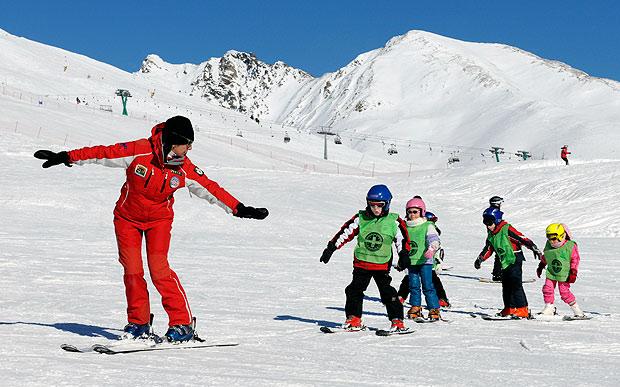
The resort was developed mainly to service the slopes, with a road running through the middle, and features predominantly chalet-style buildings. It’s generally quiet during the week, but comes to life during the Italian holidays and at weekends.
Be sure to have a meal at Hotel La Mirandola, situated way above the main resort. It dates back to the 12th century, and the restaurant has a vaulted stone ceiling, oodles of atmosphere and can be reached in the evening by snowmobile.
Where to stay
For a warm welcome and friendly service, the three-star, family-run Hotel Adamello is hard to beat. Good food, including a Trentino-themed gala buffet, is served and there’s also a children’s games room. From £545 with London flights, plus €50 hotel credit, Crystal Ski (crystalski.co.uk).
Alternatives
Bardonecchia and Madesimo are both uncommercialised resorts much loved by Italians. Each has easy, uncrowded slopes that are ideal for learning.
Fast facts
Resort 1,885m
Passo Tonale, Ponte di Legno and Temù
Slopes 1,120m to 3,015m
Lifts 30
Pistes 100km, 17% blue, 66% red, 17% black
Snowmaking 100%
Six-day lift pass €237
More info adamelloski.com
Best for intermediates: Alta Badia
The lively and family-friendly village of Corvara, along with neighbouring San Cassiano which is smaller and quieter, is situated at the crossroads of two huge intermediate playgrounds. The local Alta Badia ski area gives easy access to the Sella Ronda circuit, and both are rich in cruisy, confidence-boosting red runs that are usually well groomed. They’re also home to some delightful mountain restaurants.
Each day you can venture as far afield as you dare before turning for home and ensuring you have time to catch the last lift. At sunset, the cliffs and crags of the Dolomites turn an extraordinarily vibrant shade of pink. The panorama is so enchanting that your eyes are perpetually drawn to the skyline, and sometimes it’s hard to concentrate on the snow at your feet.
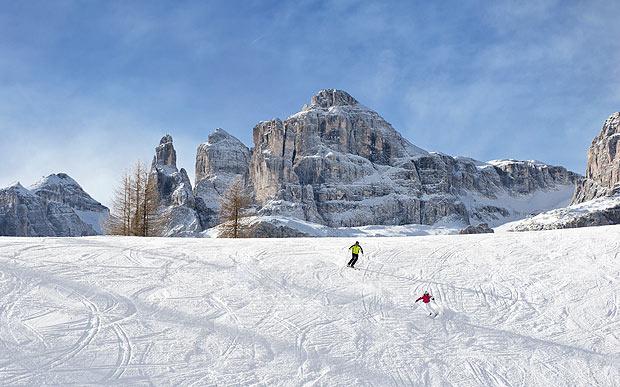
There is a clutch of highly regarded luxury hotels here. The four-star La Perla in Corvara offers superb food and service in a relaxed atmosphere and features a spectacular, extensive wine cellar, while the four-star Posta Zirm is famed for its fine cuisine and feng shui-inspired spa. New for this season is the three-star Naturhotel Miraval, plus the four-star Hotel Cappella has a new spa.
Meanwhile, in San Cassiano, the five-star Rosa Alpina has individually designed rooms and boasts two top-class restaurants, including the two Michelin-star St Hubertus.
For dining at altitude with superb mountain views, the new Piz Boé Alpine Lounge located alongside the upper station of the Boè cable car that departs from the centre of Corvara, is recommended.
Where to stay
With a strong reputation for good food and a homely atmosphere, Corvara’s three-star Hotel La Plaza is a sound choice, and great value for money. This family-run hotel has attractive rooms, as well as a small spa. From £789, Inghams (inghams.co.uk).
Alternatives
Kronplatz in the Sudtirol has an extraordinarily high proportion of gondolas among its 32 lifts, with 21 in total. These give access to 116km of mainly intermediate slopes, with plenty of wide open red and blue runs. La Thuile in the Aosta Valley offers a wealth of gentle reds and blues, and is linked to La Rosière in France, where more challenging reds await.
Fast facts
Resort 1,570m
Sella Ronda/Alta Badia
Slopes 1,005m to 3,270m
Lifts 179
Pistes 433km, 38% blue, 53% red, 9% black
Snowmaking 90%
Six-day lift pass Dolomiti Superski €258 low season, €287 high season
More info altabadia.org
Best for advanced: Alagna
This picturesque little village – complete with stone church and attractive old wooden farmhouses – in the giant Monterosa ski area has a cult following among powderhounds. Away from the limited local pistes, glorious snowfields provide endless entertainment and tough challenges for experts, In fact, some claim the backcountry terrain here rivals that of Chamonix, in France.
It’s not a place for beginners though, or anyone interested in any form of nightlife: lights out comes almost directly after dinner. But if you’re going to make the most of the off piste, you’ll need all the sleep you can get.
Alagna itself has only 15km of pistes, but it’s linked to the more intermediate-minded resorts of Gressoney and Champoluc – all covered on the Monterosa Ski lift pass and offering 200km of pistes of varying difficulties. However, it’s best to stay in Alagna if you’ve come for the off piste.

The village is situated at 1,212m from where lifts take you up to a heady 3,275m, starting point for some dramatic freeriding. You’ll need expert help, and should hire the services of a mountain guide to explore this terrain.
Where to stay
Zimmer Casa Prati is a beautifully restored farmhouse in a prime location just uphill from the main lift. It offers friendly hospitality and comfortable rooms featuring traditional wood and stone. From €55 per night per person b&b, travel not included (zimmercasaprati.com).
Alternatives
Arabba is on the mainly intermediate Sella Ronda circuit, but is also a convenient base from which to explore the most challenging slopes. The pistes here are some of the steepest in the Dolomites and include some spectacular off-piste routes. Cortina d’Ampezzo also has some challenging black runs, tough couloirs and serious off-piste runs.
Fast facts
Resort 1,200m
Monterosa Ski
Slopes 1,200m to 3,275m
Lifts 45
Pistes 73km, 17% blue, 72% red, 11% black
Snowmaking 97%
Six-day lift pass €222
More info monterosa-ski.com
Best for snow reliability: Cervinia
This is a high-altitude resort with fabulous long runs, and even in the driest Italian winter top-to-bottom snow conditions are virtually guaranteed from December to the end of April. Plus, there’s good grooming and snowmaking on key runs. Cervinia claims 160km of pistes covered on the local lift pass and is also linked by lift to Zermatt in Switzerland. The more expensive International pass claims a mighty 360km although these figures are difficult to verify – German cartographer Christoph Schrahe puts the total at a more sensible-sounding 251km.
It’s somewhere Italy should be proud of. Il Duce, Benito Mussolini, felt exactly the same and decreed in the 1930s that the then embryonic resort should change its name from the Swiss-German-sounding Breuil to Cervinia, to reflect the Italianate glory of the mountain above it. Unfortunately, most of us think of this mountain as the Matterhorn rather than Il Cervino – and there’s a less spectacular view of its iconic shape from the Italian side of the peak.
Cervinia isn’t the prettiest resort in the Alps, with some rather ugly architecture, but its slopes offer a wonderful playground, dictated by the easy gradient of its seemingly never-ending runs. These allow beginners and wobbly intermediates to gain enormous confidence in an extensive high-mountain area.

The 8km Ventina red run, with breathtaking views of 4,000m peaks, descends a mighty 1,833m from the top of Plateau Rosa (3,480m) all the way down to the resort, and if completed without a stop is guaranteed to turn even the strongest legs to spaghetti.
Where to stay
For authentic mountain hospitality, the four-star Hotel Bucaneve is a standout choice. Staff wearing traditional local dress offer a warm welcome, and the individually-styled bedrooms feature antique furniture. The Bucaneve is centrally located, just a three-minute walk to the nearest lift, and serves good cuisine. Average price £1,095, Crystal Ski (crystalski.co.uk).
Alternatives
Livigno and Passo Tonale are both high enough to ensure that adequate snow cover is virtually guaranteed.
Fast facts
Resort 2,050m
Slopes 1,525m to 3,480m
Lifts 21
Pistes 160km, 30% blue, 59% red, 11% black
Snowmaking 50%
Six-day lift pass €222 low season, €242 high season
More info cervinia.it
Best for charm and romance: Cortina d’Ampezzo
Italy’s chicest destination is an ancient mountain town in the Dolomites surrounded by soaring cathedrals of sandstone. The centre is dominated by a green and white bell tower and a glittering confection of grand 19th century mansions.
Despite being variously occupied over the centuries by foreign invaders, including Austria and even the Americans in 1945, Cortina has stubbornly maintained a spiritual independence of its own. While the residents of surrounding towns and villages primarily speak Italian or German, native Cortinese cling to their ancient Ladin language to converse among themselves.
Cortina’s 115km of marked slopes (covered on the local lift pass) are divided into separate areas, and best suit intermediates and experts. There is a handful of tricky black runs, plus countless off-piste opportunities in good snow conditions. It’s connected via a bus ride into Sella Ronda circuit (all covered on the Dolomiti Superski pass). The free bus takes you to Passo Falzarego and the cable-car up to the 2,788m summit of Lagazuoi. From here you head down the Hidden Valley to the hamlet of Armentarola and on to San Cassiano and the rest of the circuit.
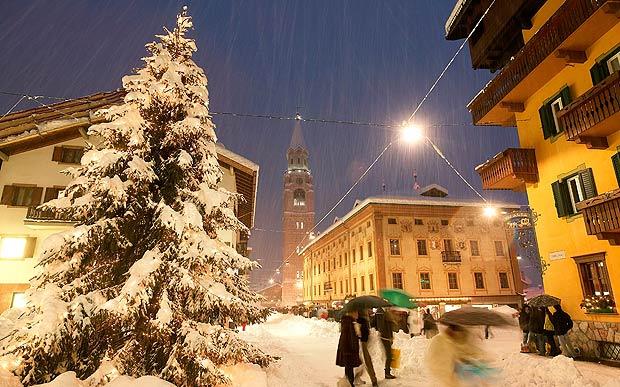
In Cortina itself, the business of skiing and snowboarding plays second fiddle to the social sport of seeing and being seen outside and inside the elegant boutiques and antique shops lining the Corso Italia, the pedestrianised main street.
Encroaching twilight is the signal for Cortina to come out and play. A colony of voluminous fur coats and designer ski wear gathers noisily in the Piazza Venezia at the start of the evening passeggiata. Much later, the party atmosphere is transferred to intimate wine bars, expensive restaurants, and a smattering of softly-lit nightclubs.
Cortina hosted the 1956 Winter Olympics and its pedigree as a centre for winter sports should be impeccable. However, in recent decades there’s been a lack of investment in the lift system and a consequent failure to attract significant numbers of international visitors, although this is changing – it’s now about 50:50 Italian to international visitors according to the resort.
And Cortina is starting to widen its appeal further by developing new experiences; the Col Gallina refuge in Passo Falzarego offers the starlight room, a standalone bedroom sleeping two with walls and ceiling made of glass for an unbeatable stargazing experience. The refuge also offers excursions on fat-tyre bikes, plus snowshoeing excursions to a restored soldiers encampment with a guide in historic uniform. Diehards can choose to spend a night in the barracks.
Where to stay
The four-star Hotel Ancora, with its traditional wooden balconies and painted frescoes, has been in the same family for four generations, and is in a superb location in the heart of the pedestrian area. It serves some of the finest cuisine in town, while the rooms are tastefully decorated and filled with fine antiques. From £985 b&b including car hire from (momentumski.com).
Alternatives
The market town of Ortisei in the Val Gardena is packed with charming buildings and churches and is surrounded my majestic peaks. Its local slopes offer lots of relaxed cruising. The small, quiet village of San Cassiano in Alta Badia is set in an attractive, tree-lined valley and has a traditional atmosphere. It’s linked to the extensive Sella Ronda circuit and also, in the other direction to the gentle runs of charming Alpe di Siusi (Seiser Alm), the highest alpine meadow in Europe.
Fast facts
Resort 1,225m
Slopes 1,225m to 2,930m
Lifts 34
Pistes 115km, 50% blue, 35% red, 15% black
Snowmaking 95%
Six-day lift pass Local €264, Dolomiti Superski €258 low season, €287 high season
More info cortinadolomiti.eu
Best for partying: Sauze d’Oulx
Sauze d’Oulx had a reputation in the 1970s and 1980s as a sort of Magaluf with moguls, where pub was more important than piste, and many of its strong British youth following never made it on to the snow before midday. These days it has cleaned up its act. The charming Italian village that it once was is now back on form, but fortunately the party atmosphere never went away.
The village has an attractive, cobbled centre, but most of the resort is made up of modern, block-like buildings. Out of the centre, there are quieter, more secluded areas.
Sauze has some of Italy’s best pistes, with undulating terrain linking to the resorts of Sansicario, Sestriere, and across the French border to Montgenèvre and the rest of the Milky Way – a vast, linked area with 400km (or 251km according to the Schrahe measurement) of pistes served by 66 lifts. The local slopes are spread out across a wooded mountainside. At the heart of these runs is Sportinia – a mid-mountain collection of restaurants, hotels and a nursery area.
You don’t need to spend a fortune on eating out and entertainment here – the prices are roughly a third of those in the premier French resorts of Courchevel and Val d’Isère. Après begins with live music at Capanna Mollino in the Sportinia area, and moves on to the Village café-bar on the home run into the resort. Other lively places to try include Ghost bar and Paddy McGinty’s pub.
Source: Best Italian ski resorts
